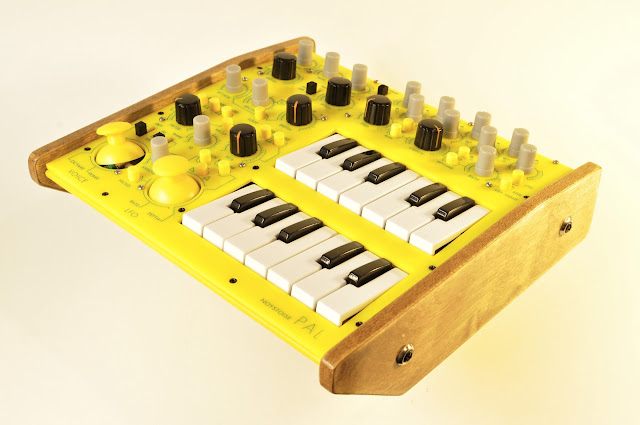The NTDD is a PT2399 based dual-delay(DD) processor, and analog Dub-Siren circuit.
DELAY:
There are two PT2399 delay chips in series with independent delay time controls on the X and Y axis of the "TIME" joystick(Left).
The delay-mix and feedback-amount are controlled together by the "ECHO" knob. The "REGEN X2" switch enables the output from delay-chip 1 to be fed back to its input, as well as to delay-chip 2's input. When disengaged, only delay-chip 2 will have feedback(echo).
The Echo and Feedback circuits are designed more for experimental exploratory noise, and less for traditional audio processing.
The delay times can go very low and become very distorted, and the feedback is set very high to allow maximal feedback and self-filtering with the use of auto-leveling.
An optical compressor is used to prevent feedback runaway, while allowing lower signals to regenerate continuously.
An internal trimmer resistor can be used to adjust the sensitivity of the compressor.
SIREN:
The "Dub-Siren" consists of a square-wave VCO, gated envelope generator and LFO.
The envelope generator is active while the "GATE" switch is held, and the "ENV"(envelope) knob determines the Attack and Release time when the Gate switch is pressed and released.
The three position switch below the Envelope knob determines the Envelope knob's range. In the upper position, the Envelope knob will have a fast attack, and the knob will only change the release time of the envelope. In the center position, the Envelope knob range will be split between Attack and Release. Increasing the Attack time will in-turn decrease the Release time, and vice-versa. In the lower position, the envelope will have a fast Release time, and the ENV knob will only change the Attack time.
By default, the envelope generator controls the volume of the square-wave VCO, but can also be used to modulate either the Pitch of the VCO or the Rate of the LFO with the "MOD" 3-way switch. In the center position, the MOD switch is "OFF".
The LFO modulates the Pitch of the VCO.
The LFO can be set to Square-wave or Triangle-wave with the "SQR-TRI" switch. The LFO Depth and Rate are controlled with the X and Y axis of the right joystick.
The LFO voltage can be offset with the "BIAS" knob. While the LFO depth is set to minimum, the BIAS knob can be used to change the pitch range of the VCO independent of the LFO.
The NTDD also comes equipped with;
Volume knob(VOL)
Power ON/OFF switch with LED
1/8 inch(3.5mm) input jack
1/4 inch line output jack
5.1mm DC adapter(9V tip-positive)
Built-in speaker
3XAAA battery compartment.









